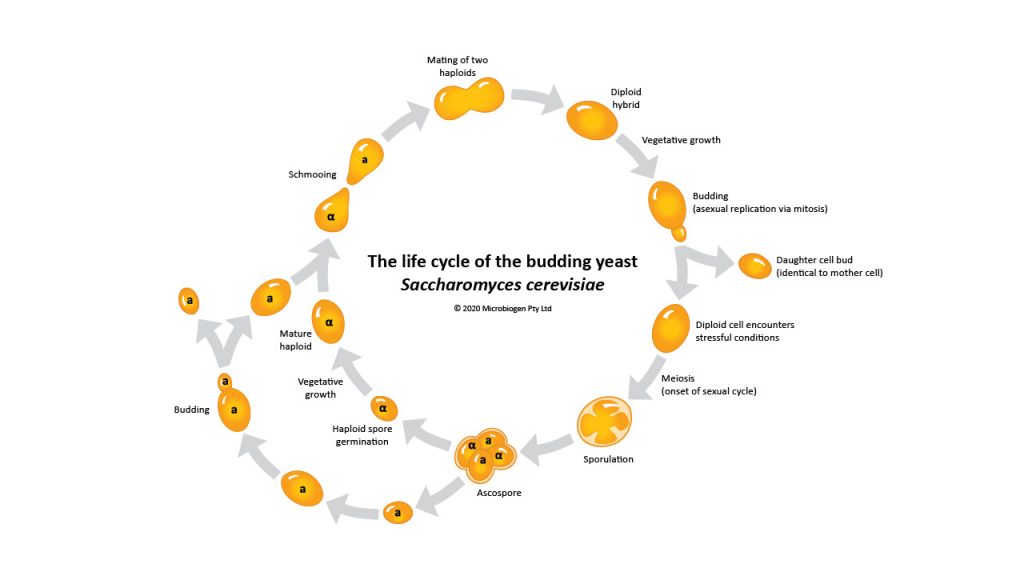What exactly is a yeast?
Yeasts are living, breathing microorganisms that have been used since 6,000 B.C. to make some of the most important products in human civilisation: bread, beer and wine (Reed et al., 1991). Although the earliest users of Saccharomyces yeast had no concept of microorganisms, they quickly learnt how to employ yeast to make drinking water safe and even bake bread. Saccharomyces cerevisiae yeast produces almost all ethanol worldwide and provides a major solution to reducing carbon emissions as a source of sustainable fuel. It is also the most widely used microorganism, estimated to be 100 times more widely used than ALL other domesticated microorganisms combined.
Interesting facts about Saccharomyces cerevisiae yeast:
- Saccharomyces yeasts are small (5–10 μm in diameter) ovoid, single-celled microbes, that are vastly more complex than viruses and bacteria.
- They are grouped within the Kingdom Fungi, and have the same basic cell structure as humans – that is, they consist of eukaryotic cells with membrane-bound organelles such as the nucleus (where chromosomal DNA is stored in eukaryotic organisms).
- Saccharomyces yeasts can reproduce both sexually (through meiosis, where the progeny inherit different traits from the parental cells) and asexually (through mitotic cell division called “budding”, where the progeny are identical to the parent cell).
- Yeasts are grouped into two different ‘genders’ called ‘mating types’: a’s and alphas.
- Parental yeast cells have bud scars where new buds have formed and broken free. Older yeast cells that have divided several times can have as many as 20 bud scars (Chaudhari et al., 2012), visible when magnified under a microscope as round, raised patches.
- Despite their small size, yeasts are quite robust and can live with OR without oxygen.
- Yeasts are resistant to viral attack and can inhibit bacterial growth, desirable traits in the production of food and drinks fit for human consumption.
- Saccharomyces cerevisiae yeast is regarded as a very safe and important contributor to human food and culture.

References
Reed G. & Nagodawithana T.W. (1991). Yeast Technology, 2nd edn. Van Nostrand Reinhold, New York.
Chaudhari, R.D., Stenson, J.D., Overton, T.W. and Thomas, C.R. (2012). Effect of bud scars on the mechanical properties of Saccharomyces cerevisiae cell walls, Chemical Engineering Science, Volume 84, Pages 188-196, ISSN 0009-2509, https://doi.org/10.1016/j.ces.2012.08.027.
